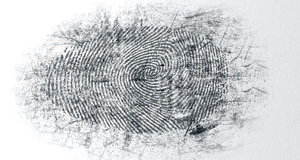Featured Article:Crime and Personality: Personality Theory and Criminality Examined
By
2011, Vol. 3 No. 01 | pg. 1/1
IN THIS ARTICLE
KEYWORDS
The search for the criminal personality or super trait has captured both the minds and imaginations of academics and the wider community (Caspi et al., 1994). Partly, this is due to a stubborn aversion to the notion that normal, regular people rape, murder, or molest children (Barlow, 1990). Secondly, there is a desire for simple, straightforward answers (Bartol, 1991). In spite of this enduring popularity of personality theory, criminologists have hotly disputed the relevance of personality within the study of criminology for several decades (Andrews & Wormith, 1989; Brown, 2006; Caspi et al., 1994; Gibbons, 1989). This paper begins by presenting and describing the different modalities by which personality theory has been applied to criminality. Critical concerns that have been raised about personality theory by criminologists will be reviewed; first, concerns related to key propositions and policy implications will are considered and evaluated; secondly, criticism regarding methodological weaknesses in personality theory research will be reviewed. Recent advances in personality theory research will be detailed in response to those specific methodological concerns, including current research findings regarding the link between personality and antisocial behavior. Finally, personality theory’s future application to the pursuit of knowledge regarding criminals and crime will be explored and avenues for integrated theory and research suggested.Generally, personality theorists endeavor to put together the puzzle of the human personality. Temperament is the term used for the childhood counterpart to personality (Farrington & Jolliffe, 2004). Facets of personality or temperament, traits, are combined together into super traits or broad dimension of personality. Personality traits are persisting underlying tendencies to act in certain ways in particular situations (Farrington & Jolliffe, 2004). Traits shape the emotional and experiential spheres of life, defining how people perceive their world and predict physical and psychological outcomes (Roberts, 2009). Various structured models of personality exist, each with a set of traits and super traits (Miller & Lynam, 2001). Personality and crime have been linked in two general ways. First, in “personality-trait psychology” (Akers & Sellers, 2009, p. 74) certain traits or super traits within a structured model of personality may be linked to antisocial behavior (ASB).1 As reviewed by Miller and Lynam (2001), four structured models of personality theory were found to be widely used in criminological research and are considered reliable: the five-factor model (FFM; McCrae & Costa, 1990), the PEN model (Eysenck, 1977), Tellegen’s three-factor model (1985), and Cloninger’s temperament and character model (Cloninger, Dragan, Svraki, & Przybeck, 1993). In Table 1, the traits of these models are listed and defined. Eysenck hypothesized specific associations between the PEN model and ASB, proposing that the typical criminal would possess high levels of all three of his proposed personality dimensions. Cloninger hypothesized a link between ASB and personality dimensions from his model, stating that ASB would be linked to high novelty seeking, low harm avoidance, and low reward dependence (see Table 1). The second way that personality theorists have linked personality to crime is through “personality-type psychology” (Akers & Sellers, 2009, p. 74) or by asserting that certain deviant, abnormal individuals possess a criminal personality, labeled psychopathic, sociopathic, or antisocial. The complex and twisting history of the term and concept of psychopathy can be traced back to the early 1800s (Feeney, 2003), contributing to its common misuse by both academics and nonacademics.2 Hare (1993, 1996) set forth a psychological schematic of persistent offenders who possess certain dysfunctional interpersonal, affective, and behavioral qualities and make up about one percentage of the population. The distinguishing interpersonal and affective characteristic of psychopaths is the dual possession of absolute self-centeredness, grandiosity, callousness, and lack of remorse or empathy for others coupled with a charismatic, charming, and manipulative superficiality (Hare, 1993). The defining behavioral characteristics of psychopaths are impulsivity, irresponsibility, risk taking, and antisocial behavior (Hare, 1993). Table 2 displays the emotional, interpersonal, and acts of social deviance hypothesized to indicate psychopathy. The term antisocial, not psychopath or sociopath, is now used by the American Psychological Association in the latest Diagnostic and Statistical Manual (DSM-IV-TR, 2000). This disorder manifests itself as a persistent disregard for and violation of the rights of others, beginning at an early age and persisting into adulthood. The DSM-IV-TR (2000) outlines the antisocial personality disorder as a broader clinical disorder than psychopathy, a diagnosis that could easily be applied to many who engage in criminal behavior (see Table 2). Concerns Related to Theoretical Propositions and Policy ImplicationsCertain personality theorists such as Eysenck (1977) postulated that personality traits stem from biological causes. For example, Eysenck noted that arousal levels are directly associated with the personality trait of extraversion (Eysenck, 1977) and testosterone levels are linked to levels of psychotocism (Eysenck, 1997). The biologically deterministic premise postulated within segments of personality theory sparked an intense debate in criminology (Andrews & Wormith, 1989; Gibbons, 1989), which provides just a glimpse into a chasm in the field of criminology that has been rupturing for decades. Criticisms against deterministic thought can best be understood within the historical context (Hirschi & Hindelang, 1977; Laub & Sampson, 1991; Rafter, 2006). Criminology is a field full of deep schisms and sharp debates, a sort of “hybrid” discipline (Gibbons, 1989), with even the historical accounts of criminology being disputed (Brown, 2006; Forsythe, 1995; Garland, 1997; Jones, 2008; Rafter, 2004). Yet, it is generally agreed that the foundations for understanding criminal behavior, even the justification for the existence of the discipline of criminology, is rooted in psychobiological perspectives (Brown, 2006; Garland, 1997; Glicksohn, 2002; Jones, 2008). Many of those considered to be the founders of criminology collaborated with psychiatrists focusing on the rehabilitation and medical or psychological treatment of criminal deviance, viewing such behavior as a disease of the mind or intellect rather than holding to the more primitive explanations that attributed crime to manifestations of evil spirits or sinfulness (Hervé, 2007; Jones, 2008; Rafter, 2004). With the dawning of the ideals of the Enlightenment, interest grew in the notion that just as there are natural laws that act upon the physical world, there may be underlying forces that propel individuals or groups to react in certain ways (Jones, 2008). Two distinct schools of positivism arose during this period, those who assumed that these underlying forces were societal and those who assumed that the forces propelling criminal behavior were individualistic or psychological. One faction of nineteenth century positivists, with researchers such as Guerry and Quetelet, focused primarily on societal forces and emphasized geographical differences in crime rates, especially the effects of urbanization (Jones, 2008; Quetelet, 2003). At the core of this work was the idea that individuals do not have free will to act upon their societal environment, but rather are being acted upon by social forces; “Society prepares crime and the criminal is only the instrument that executes them” (Quetelet, Physique Sociale, quoted in Jones, 2008, p. 8). However, the name most associated with nineteenth century positivism is Cesare Lombroso. Lombroso considered criminal behavior as indicative of degeneration to a lower level of functioning caused by brain damage or from certain genetic impacts (such as birth defects passed to children born of diseased or alcoholic parents), which impeded natural development (Glicksohn, 2002; Jones, 2008). Jones (2008) notes that Lombroso’ antagonists recount his professed allegiance to the use of the scientific method, yet they also detail how he would elaborate wildly, speculating far beyond the bounds of his empirical observations. Occasionally, Lombroso’s work is completely omitted from texts advocating individualistic or psychological approaches to criminal behavior, as Lombroso’s work is seen as an embarrassment and deemed a precursor to the Nazi ideology of the Ayran race (Jones, 2008; Rafter, 2006). Against this blemished backdrop of Nazi ideologies of racial hygiene, labeled biological determinism, sociologically inclined theories flourished within criminology and individualistic explanations for criminality were deserted as taboo and unmentionable (Andrews & Wormith, 1989; Glicksohn, 2002; Hirschi & Hindelang, 1977; Laub & Sampson, 1991). Concerns about Policy ImplicationsWithin such a historical context, ethical and moral concerns were raised regarding personality theory leading to inequitable or brutish policies (Rafter, 2006). Fears of policy recommendations forcing medical procedures, drug treatment, or excessively restrictive practices were common concerns levied against highly deterministic psychological theories (Bartol & Bartol, 2004; Gibbons, 1986; Jones, 2008). Labeling or stigmatizing persons as psychopaths, sociopaths, or antisocial, raised concerns that such labels might lead to unmerited, harsh sentences, as such individuals would be deemed as incorrigible (Andrews & Wormith, 1989). Conversely, there were concerns that labeling offenders with personality disorders could result in doubts about their culpability for crimes, leading to undue leniency (Bartol & Bartol, 2004). Personality theorists also were criticized for focusing solely on dysfunctional persons rather than the environments that are producing their dysfunction (Jones, 2008; Tannenbaum, 1938). The fear was that this one-dimensional focus on criminal behavior originating from within the person could lead to the policy recommendations that neglected and dismissed the environmental or social forces that foster crime (Bartol & Bartol, 2004). Responses to the Criticisms Regarding Determinism and Policy ImplicationsEven within the initial research centered on personality and crime, such as research conducted by the Gluecks, personality theory was differentiated from biological determinism by concentrating on the interaction of personality with the environment (Andrews & Wormith, 1989; Laub & Sampson, 1991). Eysenck describes his theory as a diathesis-stress model, postulating that a predisposition may be inherited for certain types of mental illness but it is activated by certain environmental stress factors (Eysenck, 2003, p. 91).
Moffitt (1993, 2006) also recognized continuity of criminal behavior of the persistent offenders3 as neither totally trait driven, nor entirely environmentally sustained. Rather, persistence in ASB is considered the result of a reciprocal process between individual traits and the environmental reactions to those personal traits (Moffitt, 2006). Concerning the fear that policy implications would neglect social problems, much to the contrary, personality theory’s focus on the interactional effects of individuals with their environment has led to the careful development of research implications involving the family, the school environment, as well as boarder community and societal institutions (Andrews & Wormith, 1989; Eysenck, 2003; Moffitt, 1993, 2006, 2007; Farrington, 2002; Farrington & Jolliffe, 2004). Childhood dysfunctional is attributed to exposure to parental violence, poor parental-child attachment, and abuse (Caspi et al., 1994; Moffitt, 1993). Childhood vulnerabilities are considered to be resultant of maternal drug use, poor nutrition, exposure to toxins, and deprivation of affection (Caspi et al., 1994; Farrington, 2002; Moffitt, 1993, 2006). Moffitt (2007) predicted higher prevalence of delinquency among ethnic minorities due to an increased likelihood of experiencing predicted risk markers (i.e., poor prenatal care, exposure to toxins, family adversity), which minorities are subjected to at elevated levels due to poverty and institutionalized discrimination. Moffitt (2006) also emphasized the importance of the prevention of entrapment of adolescents in detrimental snares, such as incarceration, teen pregnancy, or drug addiction. Therefore, policy implications generated from personality theory have not been limited to interventions at the individual level, but policy recommendations have been multi-dimensional, including interventions at the family, school, and community levels (Caspi, Lynam, Moffitt, & Silva, 1993; Lynam et al., 2000; Farrington, 2002). However, vigilance is recommended regarding stigmatization resulting from labeling individuals with deviant personality disorders. In England, the presence of such diagnoses justifies non-engagement in treatment by mental health professionals with such clients based on the Mental Health Act of 1983, with its so-called “treatability” criterion (Appelbaum, 2005, p. 397; Feeney, 2003). Modifications in criminal law in England now permit indefinite detention of persons who are thought likely to represent a serious threat (Appelbaum, 2005; Seddon, 2008). Such persons must have a severe personality disorder diagnosis that makes her or him “more likely than not to commit an offence that might be expected to lead to serious physical or psychological harm from which a victim would find it difficult to recover” (Appelbaum, 2005, p. 398; Seddon, 2008). In clinical professions, “the most controversial issue has been whether a connection exists between serious mental disorder and violence” (Melton, Petrila, Poythress, & Slobogin, 2007, p. 318; Webster & Hucker, 2007). Yet, the courts in England are now requiring such evaluations and risk assessments from mental health professionals (Appelbaum, 2005; Seddon, 2008). Sexual predator statutes that have been passed in several U.S. states are similar to these new laws in England but have a much more limited scope (Appelbaum, 2005). Regarding fears of undue leniency from the justice system due to labeling criminals with personality disorders, the pendulum of justice seems to be swinging in a more punitive direction. For example, the acquittal of John Hinckley in 1982 set off a groundswell of criticism against the insanity plea (La Fond & Durham, 1992; Melton et al., 2007). As a result, 39 states made dozens of changes in their laws regarding insanity pleas, Utah and Idaho completely abolished the defense at criminal trials, and the U.S. Congress passed legislation that made changes in the way the insanity plea may be used in criminal court (La Fond & Durham, 1992; Melton et al., 2007). Methodological ConcernsBeyond criticisms regarding the underlying assumptions or potentially negative impacts of personality theory on policy, criticisms were made in the past regarding research methods in personality theory research (Miller & Lynam, 2001). Researching personality traits was considered by many as a mere circular blaming exercise, condemning criminals for their own criminal propensities (Glicksohn, 2002). Trait theory was characterized as hypothesizing, “delinquents are delinquent because they have delinquency within them” (Jones, 2008, p. 12). In a review of personality research, Miller and Lynam (2001) and Roberts (2009) noted key methodological weaknesses in early personality research that planted doubts among criminologists regarding its reliability and validity, including: the construct validity and reliability of personality trait measures, doubts about the validity of projection tests, and concerns with scale construction through “criterion keying” (p. 766). Caspi et al. (1994) noted that critics of previous personality research highlighted problems with the measurement of personality and delinquency and biased sampling. Past methodological questions regarding measures of personality through the use of criterion keying specifically centered on the tautological problem with measuring the personality dimension denoting delinquency (Capsi et al., 1994; Miller & Lynam, 2001). As several measures, such as the Minnesota Multiphasic Personality Inventory (MMPI) and the California Psychological Inventory (CPI), were designed to differentiate delinquents from nondeliquents, items in the scales were tautological and limited to demonstrating that the most delinquent individuals assessed were in fact the most similar to the definitions of delinquency in the scales (Caspi et al., 1994; Miller & Lynam, 2001). Past critics of personality research also were suspicious of the use of official reports for the offending outcome measure that could have created an underrepresentation of offenders who do not get caught or even that such undetected offenders may be inadvertently placed in the nonoffending control groups (Caspi et al., 1994). Also, criticisms were made of the use of self-report measures of offending for including trivial items, plus fears were raised concerning the underreporting of offending (Caspi et al., 1994). Although efforts have been made to correct these weaknesses in measurement by using multiple offending indicators (Caspi et al., 1994), these issues do not uniquely belong to personality researchers, but present a universal difficulty in criminological research (Cantor & Lynch, 2000; Geerken, 1994; Huizinga, & Elliott, 1986; Thornberry & Krohn, 2000). In fact, the Gluecks, renowned yet marginalized for their research on criminal careers, were collecting multi-informant indicators for delinquency in addition to using official records in their very earliest research (Laub & Sampson, 1991). Criticisms regarding biased samples were due to the primary use of incarcerated populations that only represented offenders who were detected and sentenced (Caspi et al., 1994). Differences in the characteristics of detected and nondetected offenders were presumed to be spurious or confounding variables that could have influenced the study findings (Caspi et al., 1994). Also race, gender, and class biases in samples were noted (Caspi et al., 1994). Overcoming the Methodological Weaknesses in Current ResearchIn their meta-analytic review of studies of personality and ASB, Miller and Lynam (2001) concluded that these previously mentioned weaknesses within personality research have been overcome (see also, Roberts, 2009). As far as the construct of personality, Miller and Lynam (2001) concluded that the structural models of personality that they included in their review (see Table 1) have been sufficiently tested and “warrant confidence in their reliability and validity” (p. 768). In regards to the use of projection tests, such tests are no longer viewed as reliable measures of personality (except by the few psychoanalysts in the field) and are no longer used in research (Miller & Lynam, 2001). To avoid the problem of tautology, Caspi et al. (1994) used assessment measures that were not designed to differentiate delinquents from nondelinquents, but instead they utilized instruments that assessed an array of traits that may be linked to ASB. Miller and Lynam (2001) corrected the tautological issue by including the criterion-keyed scales only as measures of delinquency, not as a personality trait. Moffit, Caspi, Rutter, and Silva (2001) similarly used conduct disorder as a measure of delinquency not a personality predictor. In the meta-analytic review of over 60 studies investigating the relationship between personality traits and ASB conducted between 1963 and 2000 based on the four structural models in Table 1, the largest effect sizes (greater than .30) were found for psychoticism, agreeableness, and novelty seeking (Miller & Lynam, 2001). Interestingly, variations across gender and sample type were noted. For example, neuroticism was only weakly related to ASB in female samples and extraversion was more strongly related to ASB in nonprisoner and self-report samples (Miller & Lynam, 2001). As evidenced by this review and other reviews, variation in sample type has increased within these types of studies (Caspi et al., 1994; Miller & Lynam, 2001). In summarizing the results of the review (using FFM as a common denominator for all four models), these findings suggested that individuals low in agreeableness (i.e., those hostile and indifferent to others) and low in conscientiousness (i.e., those with poor impulse control and lacking in motivation) are more likely to engage in ASB (Miller & Lynam, 2001). The personality trait of impulsivity or the FFM dimension of low conscientiousness (see Table 1) is the trait that has been the most consistently liked to ASB (Farrington & Jolliffe, 2004; Farrington, 1992, 2002; White et al., 1994). Advances in brain imaging have allowed researchers to investigate the connection between frontal lobe executive functioning and impulsivity (Moffitt, 1990; Eme, 2008), suggesting that hyperactivity and a poor ability to perceive potential consequences of actions may result in school failure (Farrington, 2002). Although Gottfredson and Hirschi (1990) are sociologists by training, they also argued that people differ in an underlying criminal propensity, i.e., low self-control. According to self-control theory, the formation of the stable trait of self-control occurs via the parent-child socialization or the reciprocal bonding process from birth to age eight (Gottfredson & Hirschi, 1990; Gottfredson, 2007). From these early attachments or social bonds, an individual gains self-control or “the tendency to delay short-term gain for long-term personal and collective interests” (Gottfredson, 2007, p. 537). Gottfredson and Hirschi’s theory has been empirically supported through numerous studies across ages, groups, cultures, crimes, behaviors related to crime, and time periods (Gottfredson, 2006; Pratt, 2009). A meta-analysis of the theory found a combined effect size from 21 studies of .20, regarded as one of the strongest documented micro-level correlates of crime (Pratt & Cullen, 2000). An exception to the link between low self-control and crime has been noted in white-collar criminals, with findings suggesting that they are high in conscientiousness, but low in integrity (Blickle, Schlegel, Fassbender & Klein, 2006). Low empathy also has been thoroughly investigated as a predictor of ASB, but empirical evidence relating measures of empathy to ASB is not conclusive or consistent (for reviews, see Jolliffe & Farrington, 2004; Lovett & Sheffield, 2007; Varker, Devilly, Ward, & Beech, 2008). In a review and meta-analysis of 35 studies, low empathy was found to be strongly related to violent offenses, but relatively weak to sex offenses. Yet, when controlling for intelligence and SES, the relationship between low empathy and offending disappeared (Jolliffe & Farrington, 2004). In a review of 17 studies by Lovett and Sheffield (2007), no relationship between low empathy and aggression was found in children, yet a relationship was found with adolescents. Although the issue of tautology is still remains in the Hare Psychopathy Checklist-Revised (PCL-R) due to its behavioral component, psychopathy as measured on the PCL-R has been consistently linked to offending and recidivism (Hemphill, Hare, & Wong, 1998; Porter & Woodworth, 2006; Salekin, Rogers, & Sewell, 1995). Based on a review of psychopathy and crime, Hare (1993) estimated that psychopaths commit more than 50% of all crime, making up a high percentage of violent offenders, law enforcement killers, serial rapists, and wife batterers. This finding is congruent with studies suggesting that a relatively small proportion of offenders account for a large proportion of crimes (Farrington, Ohlin, & Wilson, 1986). Also supporting Hare’s proposition of the complex clinical condition of psychopathy, numerous studies using data from magnetic resonance imaging of the brains of those classified as psychopaths have revealed significant abnormalities in brain structure (Herba et al., 2007). For example, studies based on both community and offender samples have found reduced connectivity and abnormalities in the amygdala-orbitofrontal cortex network (Yang, Raine, Colletti, Toga, & Narr, 2009) and damage to the prefrontal cortices (Craig et al., 2009). Such defects in brain structure have been shown to result in aggressive behaviors, loss of normal anger and fear responses, decreased inhibition, disruption in decision making, and impairment in processing the emotional and social contexts (Craig et al., 2009; Yang et al., 2009). Future Directions for Personality Theory and Criminological ResearchAs mentioned, Gottfredson and Hirschi’s (1990) self-control theory shares strong conceptual links to personality theory (Farrington, 2002; Miller & Lynam, 2001). However, other avenues of integration of personality with criminological theory could also be useful. For example, Agnew’s (1992) General Strain Theory (GST) focuses on personal pressures arising from the environment that align with individual conditioning factors to press a person toward crime. Life strains by causing, influencing, and interacting with negative emotions, aggressive personality traits, and criminogenic social learning are predicted to result in dysfunctional coping, such as delinquent behaviors (Agnew, 1992, 2001, 2002, 2006). Agnew (1992, 2001) predicted crime is more likely when goal blockage is perceived as unjust and when the gap between goals and achievements is high in magnitude and the resulting “anger and frustration energize the individual for action, lower inhibitions, and create a desire for revenge” (Agnew, Piquero & Cullen, 2009, p. 41). From this brief overview of GST, it is evident that there exists the potential for research regarding the interaction of certain strains with personality traits, such as agreeableness and conscientiousness (see Table 1). Agnew, Brezina, Wright, and Cullen (2002) explored this connection, finding that those high in negative emotionality and low in restraint were more likely to react to strain with delinquency, but not all research has found this moderating relationship (Wareham, 2005). A recent study found that situational emotionality affected the relationship between strain and delinquency rather than trait-based negative emotionality; so further research is warranted (Moon, Morash, McCluskey, & Hwang, 2009). Routine activity theory (Cohen & Felson, 1979) is classified as a criminal opportunity theory with concepts that emphasize victim risk, specifically risk created by proximity to crime and target suitability. Related to target suitability, behavioral scientists have proposed that socially rejected youth are most likely to be the victims of teasing, bullying, and hazing by their peers (MacNeil, 2002; Vitaro, Boivin, & Tremblay, 2007), with victims of one of these forms of peer abuse often experiencing several (Thompson, Grace, & Cohen, 2001). Some researchers have recently asserted that, for some youth, victimization is a “condition” rather than an event (Finkelhor, Ormrod, Turner, & Hamby, 2005, p. 20; see also Perry, Hodges, & Egan, 2001, Solomon & Heide, 1999). These youth do not experience only one or several separate incidents of victimizations, but endure repeated and multiple victimizations, as if repeat victims comprise their own crime “hot spot” (Menard & Huizinga, 2001; Pease & Laycock, 1996). Commenting on their findings regarding family characteristics that affect vulnerability to violent juvenile victimization, Schreck and Fisher (2004) concluded that there is a possibility that vulnerability to crime is a “time-stable personal trait” predetermined by family socialization (p. 1035). Additionally, in a survey of serial rapists, 69 percent identified vulnerability as the strongest reason to attack a female; youth, helpfulness, easy compliance, those exhibiting “a learned helplessness” were characteristics of vulnerable targets (Stevens, 1998, p. 55). From such research findings, it is evident that there is potential for further investigation into the function of personality traits, even a positive trait such as agreeableness, and their possible interactions with target suitability and victim risk. 4 And lastly, focusing on the dysfunctional individual trait of psychopathy (Hare, 1993), research has yet to fully explore if particular types of crimes may be more conducive to psychopaths by interacting with their interpersonal and behavioral traits. In other words, do certain dysfunctional personality traits draw psychopathic criminals to certain types of offending and facilitate their success? For example, only one study has explored the trait of psychopathy in pimps or sex traffickers, although these offenders demonstrate the “unique set of interpersonal, affective, and lifestyle characteristics (e.g., superficial charm, shallow affect, lack of empathy, manipulativeness, parasitic) typical of psychopathic offenders” (Spidel et al., 2007, p. 163). Babiak and Hare (2007) hypothesized that qualities of psychopaths may facilitate their success in white-collar crime: possessing charm and social manipulation they succeed at job interviews, possessing attributes that are easily mistaken as leadership ability they are quickly promoted, and the changing business environment has led to a need for confident risk takers to implement ruthless personnel changes that fits with the psychopath’s insensitivity, callous disregard for others, and grandiosity. Exploring this interaction could provide beneficial information on likely crime targets or environments that best facilitate or attract psychopaths. This review of the chronicles of personality theory in criminology, its current status, and future prospects, reveals that criminology has much to gain from personality theory. Past criticisms regarding debatable deterministic predispositions and weak research methodologies have been sufficiently overcome and cutting-edge technologies available to researchers offer new opportunities to investigate the role of individual traits in offending, recidivism, and even victimization toward the goal of reducing crime and its harmful effects. The study of traits may elucidate why certain individual react to life strain by offending, why particular individuals are targets of crime, and why psychopathic offenders choose particular avenues of crime. ReferencesAkers, R. L., & Sellers, C. S. (2009). Criminological theories: Introduction, evaluation, and application. New York: Oxford University Press. Agnew, R. (1992). Foundation for a general strain theory of crime and delinquency. Criminology, 30, 47-87. Agnew, R. (2001). Building on the foundation of general strain theory: Specifying the types of strain most likely to lead to crime and delinquency. Journal of Research on Crime and Delinquency, 38, 319-361.r Agnew, R. (2002). Experienced, vicarious, and anticipated strain: An exploratory study on physical victimization and delinquency. Justice Quarterly 19, 603-632. Agnew. R. (2006). Pressured into crime: An overview of general strain theory. Los Angeles: Roxbury Publishing. Agnew, R., Brezina, T.,Wright, J. P., & Cullen, F. T. (2002). Strain, personality traits, and delinquency: Extending general strain theory. Criminology, 40(1), 43-72. Agnew, R., Piquero, N. L., & Cullen, F. T. (2009). General strain theory and white-collar crime. In S. S. Simpson, & D. Weisburd (Eds), The criminology of white-collar crime (pp. 35-60). New York: Springer Publishing. American Psychiatric Association (2000). Diagnostic and statistical manual of mental disorders (4th ed.) Text Revision. Washington, DC: Author. Andrews, D. A., & Wormith, J. S. (1989). Personality and crime: Knowledge destruction and construction in criminology. Justice Quarterly, 6, 289-309. Appelbaum, P. S. (2005). Dangerous severe personality disorders: England’s experiment in using psychiatry for public protection. Law & Psychiatry, 56, 397-399. Babiak, P., & Hare, R. D. (2007). Snakes in suits: When psychopaths go to work. New York: HarperCollins Publisher. Barlow, H. (1990). Introduction to criminology (5th ed.). Glenview: IL: Scott Foresman. Bartol, C. R. (1991). Criminal behavior: A psychological approach. Englewood Cliffs, NJ: Prentice Hall. Bartol, C. R., & Bartol, A. M. (2004). Psychology and law: Theory, research, and application. Belmont, CA: Wadsworth. Blickle, G., Schlegel, A., Fassbender, P., & Klein, U. (2006). Some personality correlates of business white-collar crime. Applied Psychology: An International Review, 55, 220-233. Boney-McCoy, S., & Finkelhor, D. (1995). Prior victimization: A risk factor for child sexual abuse and PTSD-related symptomology among sexually abused youth. Child Abuse and Neglect, 19, 1401-1421. Brown, S. (2006). The criminology of hybrids: Rethinking crime and law in technosocial networks. Theoretical Criminology, 10, 223-244. Cantor, D., & Lynch, J. (2000). Self-report surveys as measures of crime and criminal victimization. In Duffee, D. (Ed.), Measurement and Analysis of Crime and Justice (pp. 85-138). Washington, DC: US Department of Justice. Caspi. A., Lynam, D. R., Moffitt, T. E., & Silva, P. (1993) Unraveling girls’ delinquency: Biological, dispositional, and contextual contributions to adolescent misbehavior. Developmental Psychology, 29, 19-30. Caspi, A., Moffitt, T. E., Silva, P. A., Loeber, M. S., Krueger, R. F., & Schmutte, P. S. (1994). Are some people crime prone? Replications of the personality crime relationship across countries, genders, races, and methods. Criminology, 32, 163-196. Cleckly, H. (1976). The mask of sanity (5th ed.). St Louis, MO: Mosby. Cloninger. C. R., Dragan M. S., and Thomas R. P. (1993) A psychobiological model of temperament and character. Archives of General Psychiatry 50, 975-990. Cohen, L. E., & Felson, M. (1979). Social change and crime rate trends: A routine activity approach. American Sociological Review, 44, 588-608. Craig, M. C., Cantani, M., Deeley, Q., Latham, R., Daly, E., Kanaan, R. et al. (2009). Altered connections on the road to psychopathy. Molecular Psychiatry, advanced online publication June 9, 2009, 1-8. Eme, R. (2008). Male life-course persistent antisocial behavior: A review of neurodevelopmental factors. Aggression and Violent Behavior, 14, 348-358. Eysenck, H. J. (1977). Crime and personality. London: Routledge and Kegan Paul. Eysenck, H. J. (1997). Personality and the biosocial model of antisocial and criminal behavior. In A. Raine, P. A. Brennan, D. P. Farrington, & S. A. Mednick (Eds.), Biosocial bases of violence. New York: Plenum. Eysenck, H. J. (2003). Personality and the problem of criminality. In E. McLaughlin, J. Muncie, & G. Hughes (Eds.), Criminological perspectives: Essential readings (2nd ed., pp. 91-109). Thousand Oaks, CA: Sage Publications. Farrington, D. P. (1992). Juvenile delinquency. In J. C. Coleman (Ed.), The school years (2nd ed., pp. 123-163) London: Routledge. Farrington, D. P. (2002). Crime causation: Psychological theories. In J. Dessler (Ed.), Encyclopedia of crime and justice, vol. 1 (2nd ed., pp. 315-324). New York: Macmillan. Farrington D. P., & Jolliffe, D. (2004). Personality and crime. In N. J. Smelser, & P. B. Balters (Eds.), International encyclopedia of the social & behavioral sciences (pp. 11260-11264). Amsterdam: Elsvier Publications. Farrington, D., Ohlin, L., & West, D. J. (1986). Understanding and controlling crime. New York: Springer-Verlag. Feeney, A. (2003). Dangerous severe personality disorder. Advances in psychiatric treatment, 9, 349-353. Finkelhor, D., Ormrod, R., Turner, H. A., & Hamby, S. L. (2005). The victimization of children and youth: A comprehensive, national survey. Child Maltreatment, 10, 2-25. Fishbein, D. (2001). Biobehavioral perspectives in criminology. Belmont, CA: Wadsworth. Forsythe, B. (1995). The Garland thesis and the origins of modern English prison discipline: 1835 to 1939. Howard Journal of Criminal Justice, 34, 259-273. Garland, D. (1997). Of crimes and criminals: The development of criminology in Britain. In M. Maguire, M. Morgan, and R. Reiner (Eds.), The Oxford Handbook of Criminology (2nd ed). Oxford: Oxford University Press. Geerken, M. (1994). Rap sheets in criminological research: considerations and caveats. Journal of Quantitative Criminology 10, 3-21. Gibbons, D. C. (1986). Breaking out of prisons. Crime and Delinquency 32, 503-514. Gibbons, D. C. (1989). Comment – Personality and crime: Non-issues, real issues, and a theory and research agenda. Justice Quarterly, 6, 311- 323. Glicksohn, J. (2002). The neurobiology of criminal behavior. Boston: Kluwer Academic Publishers. Gottfredson, M. R. (2006). The empirical status of control theory in criminology. In F. T. Cullen, J. P. Wight, & K. R. Blevins (Eds.), Advances in criminological theory, vol. 15: Taking stock: The status of criminological theory (pp. 205-230). New Brunswick, NJ: Transaction. Gottfredson, M. R. (2007). Self-control theory and criminal violence. In D. J. Flannery, A. T. Vazsonyi, & I. D. Waldman (Eds.), The Cambridge handbook of violent behavior and aggression (pp. 533-544). New York: Cambridge University Press. Gottfredson, M. R., & Hirschi, T. (1990). A general theory of crime. Stanford, CA: Stanford University Press. Hare, R. D. (1993). Without conscience: The disturbing world of psychopaths among us. New York: Guilford Press. Hare, R. D. (1996). Psychopathy: A clinical construct whose time has come. Criminal justice and behavior, 23, 25-54. Hemphill, J. F., Hare, R. D., Wong, S. (1998). Psychopathy and recidivism: A review. Legal and Criminological Psychology, Vol. 3 (Part 1), pp. 139-170. Herba, C. M, Hodgins, S., Blackwood, N., Kumari, V., Naudts, K. H., & Phillips, M. (2007). The neurobiology of psychopathy: A focus on emotion processing. In H. Hervé, & J. C. Yuille (Eds.), The psychopath: Theory, research, and practice (pp. 253- 286). Mahwah, NJ: Lawrence Erlbaum. Hervé, H. (2007). Psychopathy across the ages: A history of the Hare Psychopath. In H. Hervé & Yuille, J. C. (Eds.), The psychopath: Theory, research and practice (pp. 31-55). Mahwah, NJ: Lawrence Erlbaum Associates, Publishers. Hirschi, T. & Hindelang, M. J. (1977). Intelligence and delinquency: A revisionist review. American Sociological Review 42, 571-587. Huizinga, D., & Elliott, D. (1986). Reassessing the reliability and validity of self-report delinquency measures. Journal of Quantitative Criminology 2, 293-327. Jolliffe, D. & Farrington, D. P. (2004). Empathy and offending: A systematic review and meta-analysis. Aggression & Violent Behavior, 9, 441 – 476. Jones, D. W. (2008). Understanding criminal behavior: Psychological approaches to criminality. Portland: Willan Publishing. La Fond, J. Q., & Durham, M. (1992). Back to the asylum: The future of mental health law and policy in the United States. New York: Oxford University Press. Laub, J. H. and Sampson, R. J. (1991). The Sutherland–Glueck debate: On the sociology of criminological knowledge. The American Journal of Sociology 96, 1402-1440. Lovett, B. J., & Sheffield, R. A. (2007). Affective empathy deficits in aggressive children and adolescents: A critical review. Clinical Psychology Review, 27, 1-13. Lynam, D. R., Caspi, A., Moffitt, T. E., Wikstrom, P., Loeber, R., & Novak, S. P. (2000). The interaction between impulsivity and neighborhood context on offending: The effects of impulsivity are stronger in poorer neighborhoods. Journal of Abnormal Psychology, 10(9), 563-574. McCrae, R. R., & Costa, P. T. (1990). Personality in adulthood. New York: Guilford Press. MacNeil, G. (2002). School bullying: An overview. In L. A. Rapp-Paglicci, A. R. Roberts, & J. S. Wodarski (Eds.), Handbook of violence (pp. 247–261). New York: John Wiley & Sons. Melton, G. B., Petrila, J., Poythress, N. G., & Slobogin, C. (2007). Psychological evaluations for the courts: A handbook for mental health professionals and lawyers (3rd ed.). New York: Guilford Press. Menard, S., & Huizinga, D. (2001). Repeat victimization in a high-risk neighborhood sample of adolescents. Youth and Society, 32, 447-472. Miller, J. D., & Lynam, D. (2001). Structural models of personality and their relation to antisocial behavior: A meta-analytic review. Criminology, 39, 765-798. Moffitt, T. E. (1990). The neuropsychology of juvenile delinquency: A Critical Review. In M. Tonry, & N. Morris (Eds.), Crime and Justice, vol. 12 (pp. 99-169). Chicago: University of Chicago Press. Moffitt, T. E. (1993). Adolescence-limited and life-course-persistent antisocial behavior: A developmental taxonomy. Psychological Review, 100, 674–701. Moffitt, T. E. (2006). Pathways in the life course to crime. In F. T. Cullen, & R. Agnew (Eds.), Criminological theory: Past to present (pp. 502-521). Los Angeles: Roxbury Publishing. Moffitt, T. E. (2007). Life-course-persistent vs. adolescence-limited antisocial behavior. In D. Cicchetti, & D. J. Cohen (Eds.), Developmental psychopathology (2nd ed., pp. 570-598). Hoboken, NJ; Wiley and Sons. Moffitt, T. E., Caspi, A. Rutter, M., Silva, P. A. (2001). Sex differences in antisocial behavior: Conduct disorder, delinquency, and violence in the Dunedin longitudinal study. Cambridge, England: Cambridge University Press. Moon, B., Morash, M., McCluskey, C. P., & Hwang, Hye-Won (2009). A comprehensive test of general strain theory. Journal of Research in Crime and Delinquency, 46, 182-212. Quetelet, A. (2003). Of the development of the propensity to crime. In E. McLaughlin, J. Muncie, J., & G. Hughes (Eds.), Criminological perspectives: Essential readings (2nd ed.). Thousand Oaks, CA: Sage Publications. Pease, K., & Laycock, G. (1996). Revictimization: Reducing the heat on hot victims (NCJ Publication No.162951). Washington, DC: National Institute of Justice. Perry, D. G., Hodges, E. V. E., & Egan, S. K. (2001). Determinants of chronic victimization by peers: A review and new model of family influence. In J. Juvonen, & S. Graham (Eds.), Peer harassment in school: The plight of the vulnerable and victimized (pp. 73–104). New York: Guilford Press. Porter, S., & Woodworth, M. (2006). Psychopathy and aggression. In C. Patrick (Ed.), Handbook of psychopathy (pp. 481-494). New York: Guilford. Pratt, T. C. (2009). Reconsidering Gottfredson and Hirschi’s General theory of crime: Linking the micro- and macro-level sources of self-control and criminal behavior over the life course. In J. Savage (Ed.), The development of persistent criminality (pp. 361-373). New York: Oxford University Press. Pratt, T. C. & Cullen, F. T. (2000). The empirical status of Gottfredson and Hirschi’s General theory of crime. Criminology, 38, 931-964. Rafter, N. (2004). The unrepentant horse-slayer: Moral insanity and the origins of criminal thought. Criminology, 42, 979-1008. Rafter, N. (2006). H. J. Eysenck in Fagin’s kitchen: The return to biological theory in 20th century criminology. History of the Human Sciences, 19, 37-56. Roberts, B. W. (2009). Back to the future: Personality and assessment and personality development. Journal of Research in Personality, 43, 137-145. Salekin, R. T., Rogers, R., Sewell, K. W. (1995). A review and mete-analysis of the Psychopathy Checklist and the Psychopathy Checklist-Revised: Predictive validity of dangerousness. Clinical Psychology: Science and Practice, 2, 203-215. Seddon, T. (2008). Dangerous liaisons: Personality disorder and the politics of risk. Punishment and Society, 10, 301-317. Schreck, C. J., & Fisher, B. S. (2004). Specifying the influence of family and peers on violent victimization: Extending routine and lifestyles theories. Journal of Interpersonal Violence, 19, 1021-1041. Solomon, E. P., & Heide, K. M. (1999). Type III trauma: Toward a more effective conceptualization of psychological trauma. International Journal of Offender Therapy and Comparative Criminology, 43, 202-210. Spidel, A., Greaves, C., Cooper, B. S, Hervé, H. F., Hare, R. D., & Yuille, J. C. (2007). The psychopath as pimp. Canadian Journal of Police and Security Services, 4, 205-211. Stevens, D. J. (1998). Inside the mind of a serial rapist. Bethesda, MD: Austin & Winfield. Tannenbaum, F. (1938). Crime and the community. New York: Columbia University Press. Tellegen, A. (1985). Structures of mood and personality and their relevance to assessing anxiety with an emphasis on self-report. In A. H. Tuma and J. D. Maser (Eds.), Anxiety and the Anxiety Disorders. Hillsdale, NJ: Lawrence Erlbaum Associates. Thompson, M., Grace, C. O., & Cohen, L. J. (2001). Best friends, worst enemies: Understanding the social lives of children. Ballentine Books: New York. Thornberry, T., & Krohn, M. (2000). The self report method for measuring delinquency and crime. In Duffee, D. (Ed.), Measurement and analysis of crime and justice (pp. 33-84). Washington, DC: US Department of Justice. Varker, T., Devilly, G. J., Ward, T., & Beech, A. R. (2008). Empathy and adolescent sexual offenders: A review of the literature. Aggression and Violent Behavior, 13, 251-260. Vitaro, F., Boivin, M., & Tremblay, R. E. (2007). Peers and violence: A two-sided developmental perspective. In D. J. Flannery, A. T. Vazsonyi, & I. D. Waldman (Eds.), The Cambridge handbook of violent behavior and aggression (pp. 361-387). New York: Cambridge University Press. Wareham, J. J. (2005). Strain, personality traits, and deviance among adolescents: Moderating factors. (Doctoral dissertation, University of South Florida, 2005). USF Electronic Theses and Dissertations, HV6025. Webster, C. D., & Hucker, S. J. (2007). Violence Risk: Assessment and management. Hoboken, NJ: John Wiley & Sons. White, J. L., Moffitt, T. E., Caspi, A., Bartusch, D. J., Needles, D. J., Stouthamer-Loeber, M. (1994). Measuring Impulsivity and Examining its Relationship to Delinquency. Journal of Abnormal Psychology 103, 192–205. Yang, Y., Raine, A., Colletti, P., Toga, A. W., & Narr, K. L. (2009). Abnormal temporal and prefrontal cortical gray matter thinning in psychopaths. Molecular Psychiatry, 14, 561-562. Endnotes
Table 1. Personality Models and Dimensions
Source: Miller, J. D., & Lynam, D. (2001). Structural models of personality and their relation to antisocial behavior: A meta-analytic review. Criminology, 39, p. 769 Table 2: Psychopathy Verses Antisocial Personality Disorder Hare Psychopathy Checklist Revised (PCL-R) Emotional/Interpersonal Traits Glibness/superficial charm Grandiose sense of self-worth Need for stimulation/prone to boredom Conning/manipulation Lack of remorse of guilt Shallow affect Callous/lack of empathy Lack of realistic, long-term goals Failure to accept responsibility for own actions Pathological lying Social deviance Many short-term marital relationships Juvenile delinquency Criminal versatility Promiscuous sexual relations Poor behavioral controls Parasitic lifestyle Early behavior problems Impulsivity Irresponsibility Revocation of conditional release Note: Items scored on a scale of 0-2 by a trained interviewer (0 = not applicable, 1 = uncertain, 2 = definitely present) DSM-IV Diagnostic Criteria for Antisocial Personality Disorder A. There is a pervasive pattern of disregard for and violation of the rights of others occurring since age 15 years, as indicated by three (or more) of the following:
B. The individual is at least age 18 years.
Sources: Robert D. Hare (1993). Without Conscience: The Disturbing World of Psychopaths Among Us. American Psychiatric Association (2000). Diagnostic and Statistical Manual of Mental Disorders (4th ed.). Suggested Reading from Inquiries Journal
Inquiries Journal provides undergraduate and graduate students around the world a platform for the wide dissemination of academic work over a range of core disciplines. Representing the work of students from hundreds of institutions around the globe, Inquiries Journal's large database of academic articles is completely free. Learn more | Blog | Submit Latest in Criminology & Criminal Justice |


















